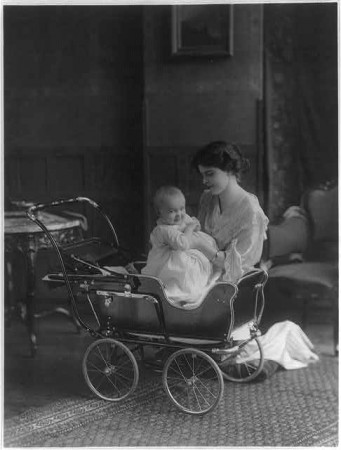In the first part of the nineteenth century, it was fashionable to dress babies in long petticoats to protect them from drafts. 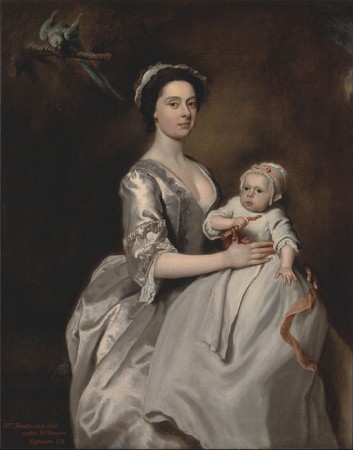
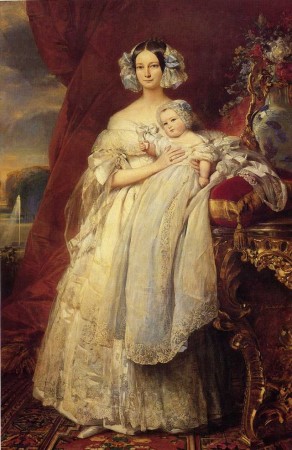 Voluminous clothing might also help keep a child from slipping out of its mother’s or nursemaid’s arms. According to Elizabeth Ewing in her History of Children’s Costume, the first modern baby carriage in America was introduced in 1848 by Charles Burton, but it was soon banned for being a nuisance to pedestrians. He had more success opening a factory in Britain, but it wasn’t until the 1870s that a pram was created where a baby could lie down. So prior to 1870, babies had to be carried.
Voluminous clothing might also help keep a child from slipping out of its mother’s or nursemaid’s arms. According to Elizabeth Ewing in her History of Children’s Costume, the first modern baby carriage in America was introduced in 1848 by Charles Burton, but it was soon banned for being a nuisance to pedestrians. He had more success opening a factory in Britain, but it wasn’t until the 1870s that a pram was created where a baby could lie down. So prior to 1870, babies had to be carried.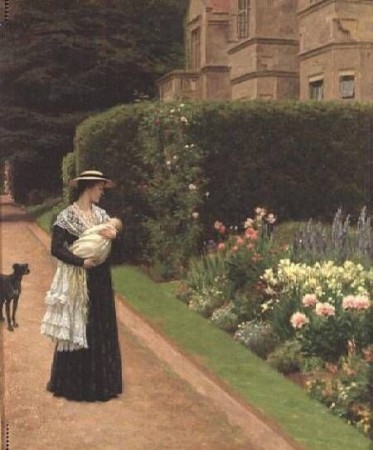 A well-nourished 18-month-old weighed an average of 26 pounds. (Quick aside: Have a look at these next two pictures: the first one really gives you a sense of the baby’s heft. The mother in the second one doesn’t seem to be straining to hold that kid at all.)
A well-nourished 18-month-old weighed an average of 26 pounds. (Quick aside: Have a look at these next two pictures: the first one really gives you a sense of the baby’s heft. The mother in the second one doesn’t seem to be straining to hold that kid at all.) 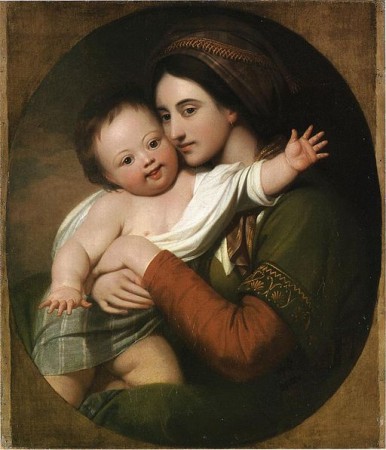
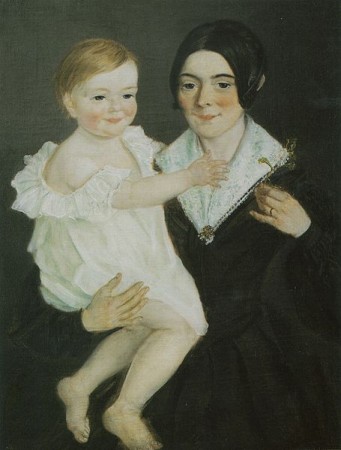 By the 1870s, you start to see baby prams in paintings. The impressionists seemed fond of painting them. Here’s Degas:
By the 1870s, you start to see baby prams in paintings. The impressionists seemed fond of painting them. Here’s Degas: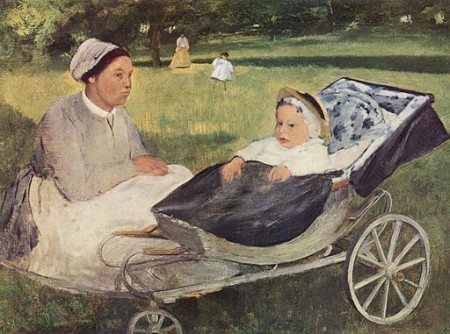 and Gauguin:
and Gauguin: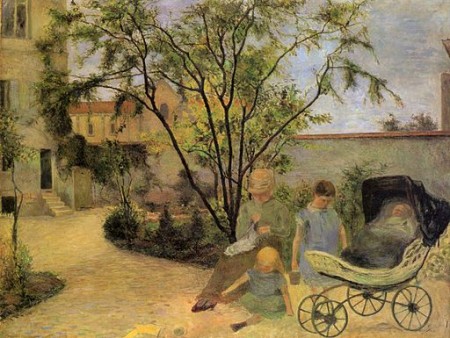 and here’s a later model, 1913. It’s such a sweet picture, isn’t it?
and here’s a later model, 1913. It’s such a sweet picture, isn’t it?
